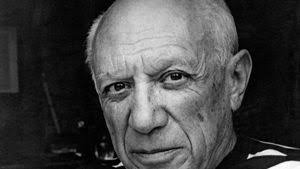Picasso Copyright Case reversed after two decades
- IP News Bulletin
- Jul 25, 2022
- 2 min read
In a longstanding legal battle that has spanned more than 20 years regarding photographs of the famous artist Pablo Picasso’s work, the United States Court of Appeals for the Ninth Circuit reversed a 2019 federal court decision and upheld a French Court decision.
The case is about a catalogue which contains 16,000 pictures of Picasso’s paintings called the Zervos Catalogue, named after the photographer Christian Zervos. The catalogue was released in 1932 by Cahiers d'Art and bought by Yves Sicre de Fontbrune in 1979. In 1999 Alan Wofsy published The Picasso Project, an illustrated catalogue of Picasso’s work which included reproductions of photographs which were in the original Zervos Catalogue.
In 1996 de Fontbrune instigated a copyright infringement suit against Wofsy. French courts first ruled in 1998 that that the images were being used for documentary purposes and thus “ineligible for copyright protection”. However, in 2001 the French courts ruled on appeal that there was a case of copyright infringement and the court awarded Fontbrune €2 million in damages. An appeal by Wofsy was rejected as he failed to pay the required amount of damages.
In order to enforce the French judgement in USA the case was brought to a US Court in 2011. to prevent the enforcement of a foreign judgement, the court had to find the decision to be “repugnant” to domestic laws.
The district court decided against the foreign decision in 2019, concluding that the use of the photographs by Wofsy was exempted from copyright infringement as it was under the fair use doctrine. The Wofsy catalogue was considered to be fair use as it was a book which would be intended for libraries, academic institutions, art collectors and auction houses. The decision also averred that commercial use of the impugned work does not create a presumption against fair use.
However, recently an Appeal Court reversed the judgement of the district court. It held that Wofsy’s use of the photograph was not protected under the fair use doctrine. The fair use doctrine was rejected on various grounds, first that Wofsy’s work was not transformative, there was no new purpose or meaning assigned to the work, the catalogue was seen as a mere reproduction of copyrighted work for use on a book that is being offered for sale. The nature of the copyrighted was also original and had some creative element in it.
The district court noted in its decision that the entire work of the Zervos catalogue was not used as it contained 16,000 photographs while Wofsy’s contained 1,492. The court stated that since less than 10% of the copyrighted work was used it was not a substantial amount.
The Appeal court however saw each of the 1,492 reproductions as a 100% copy in itself. It also noted that the fact that the value of the Zervos catalogue increased in the period when Wofsy’s work was also on the market, was irrelevant.










Comments